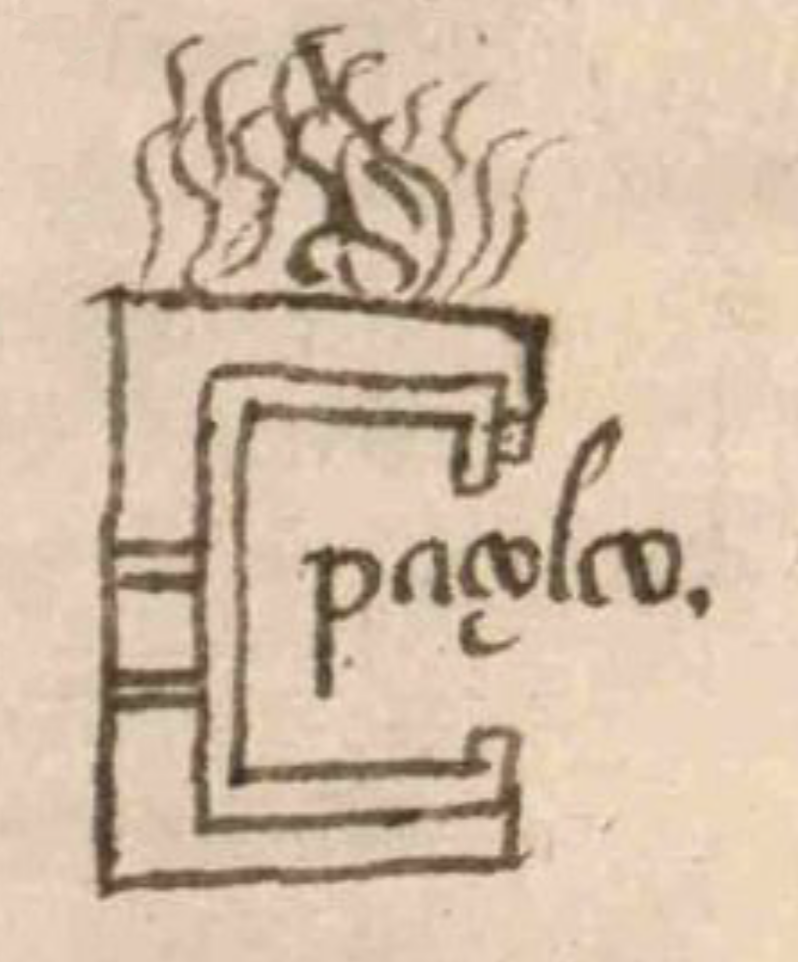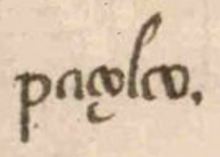Pazolco (MdelV16r)
This compound glyph for the place name Pazolco shows a building with a briar patch (pazolli) on top. The briar patch is a cluster of upright, wavy lines. If it were not for the manuscript conveying the name of the place, one might read these lines as flames and curls of smoke. The building below the briar patch may be a tecpan, the ruling palace at the heart of the town. If so, it could serve as a place holder for the locative suffix (-co), "at." The building is in a rectangular C shape. It has an inner lining and two sets of paired horizontal lines on the left side.
Robert Haskett
The building shape is similar to what artists used for calli elsewhere in this collection of manuscripts. It differs somewhat from the building shape found in the Codex Mendoza (see below). It is unclear whether this building is being shown in a bird's eye view, or whether it is shown in a profile view.
Robert Haskett
paçolco.
Pazolco
Robert Haskett
c. 1564
Robert Haskett
buildings, edificios, zarzales, briar patch, plantas, enredos, pueblos, nombres de lugares

pazol(li), briar patch, https://nahuatl.wired-humanities.org/content/pazolli
-co (locative suffix), in or at, https://nahuatl.wired-humanities.org/content/co
tecpan, ruling palace, https://nahuatl.wired-humanities.org/content/tecpan
En el Zarzal
Stephanie Wood
Códice Marquesado del Valle, Archivo General de la Nación, Ramo Hospital de Jesús leg. 276, exp. 78, folio 16 recto.
The Archivo General de la Nación (AGN), México, holds the original manuscript. This image is published here under a Creative Commons license, asking that you cite the AGN and this Visual Lexicon of Aztec Hieroglyphs.








